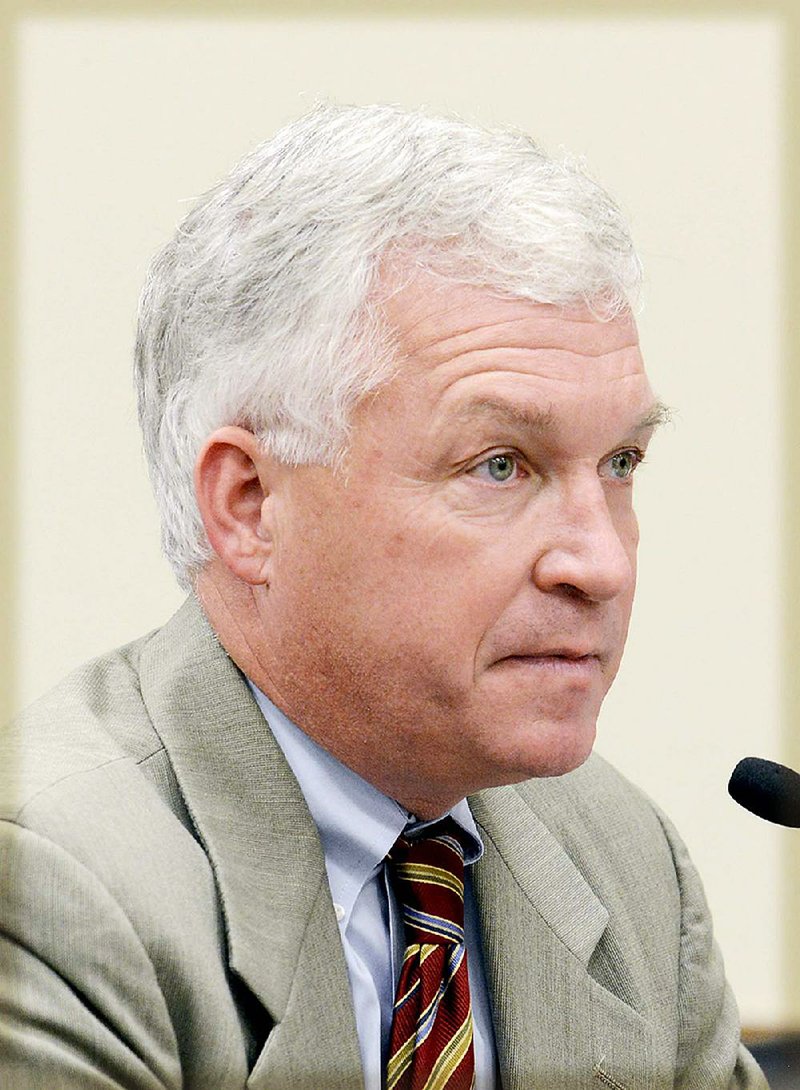The percentage of nonelderly adults who lack insurance held steady in Arkansas last year while it continued dropping in the country as a whole, according to a report released Tuesday.
According to the U.S. Centers for Disease Control and Prevention's National Center for Health Statistics, 15.7 percent of Arkansans age 18-64 lacked insurance at the time they were surveyed in 2015 as part of the National Health Interview Survey.
That was an increase, but not statistically significant, from the 15.6 percent of nonelderly Arkansas adults who lacked coverage in 2014.
Nationally, the percentage of nonelderly adults who lacked insurance fell by 3.5 percentage points, from 16.3 percent in 2014 to 12.8 percent in 2015, according to the report.
Rachel Garfield, a senior researcher with the Menlo Park, Calif.-based Kaiser Family Foundation, said the lack of change in Arkansas could be due to the state's success in enrolling people in coverage in 2014, the first year subsidies became available to many people under the federal 2010 Patient Protection and Affordable Care Act.
That year, Arkansas was among 27 states and the District of Columbia that expanded its Medicaid program to cover adults with incomes of up to 138 percent of the poverty level, as allowed under the Affordable Care Act.
Currently, that income limit is $16,394 for an individual or $33,534 for a family of four.
By the end of 2014, more than 230,000 Arkansans -- more than 90 percent of those estimated to be be eligible -- had been approved for coverage under the expanded Medicaid program.
The percentage of nonelderly Arkansas adults who lacked insurance that year fell 11.9 percentage points, the second-biggest percentage point drop among the 42 states for which rates were listed for both years in the report. The national rate fell that year by 4.1 percentage points.
In some states, enrollment was more evenly spread between the two years. For instance, in California the percentage of nonelderly adults who lacked insurance fell 7 percentage points in 2014 and 5.6 points, to 11.1 percent, in 2015.
California officials had "some problems with their outreach to the Hispanic population" in 2014, and in 2015 the state "still had a lot of people who stood to gain" by enrolling, Garfield said.
Other states didn't expand their Medicaid programs at the earliest opportunity, on Jan. 1, 2014. According to the Kaiser Family Foundation, Michigan's expansion took effect in April 2014, and New Hampshire's started in August of that year.
Pennsylvania, Indiana, Alaska and Montana expanded their Medicaid programs during 2015.
"The [Affordable Care Act] was not implemented in exactly the same way in every single state, and that's something that's important to bear in mind," Garfield said.
With almost 268,000 Arkansans approved for coverage under the expanded Medicaid program as of Jan. 31, enrollment has surpassed the 250,000 Arkansans who were initially estimated to be eligible.
Most of those who enroll are covered under the private option, which uses Medicaid funds to buy coverage in private plans through the state's federally run health insurance exchange.
Gov. Asa Hutchinson plans to seek permission from the U.S. Department of Health and Human Services to make changes to the program, including charging premiums to some enrollees, that were approved by the Legislature during a special session last month.
The revamped program would be known as Arkansas Works.
Many people who don't qualify for Medicaid are eligible for tax credits to help pay for coverage through the state's federally run insurance exchange, but they have been slower to sign up.
As of May 1, 66,584 Arkansans who didn't qualify for Medicaid had enrolled in exchange coverage, according to the Arkansas Insurance Department.
That total was still short of the 115,925 that a consultant to the Insurance Department predicted would enroll in 2014.
Marquita Little, health care policy director for Arkansas Advocates for Children and Families, said many of those who have yet to enroll would likely qualify for tax credit subsidies but don't know it.
The tax credit subsidies are available to people with incomes of up to 400 percent of the poverty level: $47,080 for an individual, for example, or $97,000 for a family of four.
Through special language attached to appropriation bills, the Legislature has prohibited the Insurance, Human Services and Health departments from promoting enrollment in the exchange since July 1, 2014.
That ban on outreach has hampered enrollment in the exchange, Little said.
"One of the most important things we can do is invest in outreach and education," she said.
Joe Thompson, director of the Arkansas Center for Health Improvement, said many of those who lack insurance are likely healthy and have made "an economically rational decision" to go without coverage.
He expects enrollment to increase along with the Affordable Care Act's penalty for failing to maintain coverage.
In 2014, the penalty was the greater of $95 per uninsured adult, $47.50 per child or 1 percent of a family's income that exceeds the tax filing threshold, which was $10,150 for an adult or $20,300 for a married couple filing a joint return.
Last year, the penalty rose to $325 per adult, $162.50 per child or 2 percent of household income above the tax filing threshold.
This year, the penalty will rise to the greater of $695 per adult, $347.50 per child or 2.5 percent of household income above the tax filing threshold.
The penalty is collected when taxpayers file their federal income tax returns. When people file their returns next year for 2016, "I think that [uninsured] group will probably for the first time feel any impact," Thompson said.
Including people of all ages, the report found that the percentage of Americans who lack insurance fell from 11.5 percent in 2014 to 9.1 percent in 2015.
The percentage of children who were uninsured fell from 5.5 percent to 4.5 percent.
The report didn't list state-by-state estimates for those age groups.
A Section on 05/18/2016
